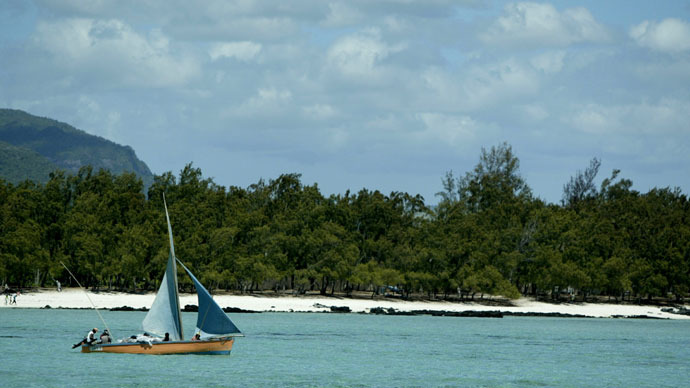Small prehistoric ‘lost continent’ found in Indian Ocean

A lost continent that once kept India and Madagascar glued to each other has been discovered under the Indian Ocean. The new study claims the existence of this tiny patch of land named Mauritia that disappeared tens of millions of years ago.
Geologists from Norway, Germany, and Britain have found evidence
of a continent that disappeared 83.5 - 61 million years ago in
waters of the Indian Ocean in course of geological transformations,
a study in the Nature Geoscience shows.
The lost continent is supposedly located under the oceanic crust
in the region of Mauritius and the Reunion Islands, about 2,000
kilometers (1,200 mi) off the south east coast of the African
continent and near the island of Madagascar. That is a great
distance away from the Indian continent with which the island of
Madagascar was a whole, according to a scientific theory. The lost
micro-continent, which scientists named Mauritia, may be a fragment
of land which kept India and Madagascar glued to each other
hundreds of million years ago.
Research into gravitational pull gave scientists clues into a
number of possible places in the Indian Ocean, such as Madagascar,
Mauritius and the Seychelles, Maldives, and Lakshadweep islands.
These places possess a slightly stronger gravitational field than
expected. This can be explained by the abnormally thick crust which
can reach 25 kilometers resembling continental crust, compared with
the 5 to 10 kilometers of oceanic crust elsewhere. However
thickness alone doesn’t prove that crust is continental- different
processes of underwater volcanism can thicken it.
The researchers then made a reconstruction of the movement of
the tectonic plates to display how the continents were connected to
each other and how the fragments of the underwater crust were
located. This showed that the places with high gravity until
about 90 million years ago were supposedly attached to
India.
Billions of years ago the Earth's landmass was gathered into a
vast single continent. The continent started breaking up and
forming other various continents.
The move of the earth’s tectonic plates and the break-up of continents is associated with geological phenomena known as mantle plumes. It is an abnormality when hot rocks rise up and soften the tectonic plates causing hot spots and break-up. Some scientist suggest that it was how the East Gondwana broke apart about 120 million years ago when India began to move northward. The hot spots which currently lie in the area of the Reunion island may have caused the India–Madagascar–Seychelles separations millions of years ago and played a role in the emergence of the Indian Ocean.

As additional evidence the scientists took samples of the sand from beaches of the island of Mauritius and made chemical tests. The results appeared to lead to an astonishing discovery. The samples contained zircons, minerals associated with continental crust. The zircons discovered date back to about 2, 000 million years ago, the study says.
"We found zircons that we extracted from the beach sands, and these are something you typically find in a continental crust. They are very old in age," says Professor Trond Torsvik, from the University of Oslo, Norway, in an interview to the BBC.
How did these semi-precious minerals get there? "Zircons don't fly," Torsvik says as cited by Science Now newspaper.
"I don't believe these could have been brought by other means—they must have been eroded from the basalt itself."
There have been past speculations about the possibility of a lost continent in the Indian Ocean. "This could be a smoking gun," geochemist Andreas Stracke at the University of Münster in Germany told Science Now newspaper.
This discovery could play a significant role in the economy of the region, Torsvik says.
"Under the law of the sea, if you can demonstrate you have a piece of continental crust on which you can put your flag, you can immediately claim 200 nautical miles around it. And that's yours under the law of the sea to do what you like with economically," he said as cited by ABC news. "So there's some degree of economic significance to something that might be purely scientific in terms of its discovery."












